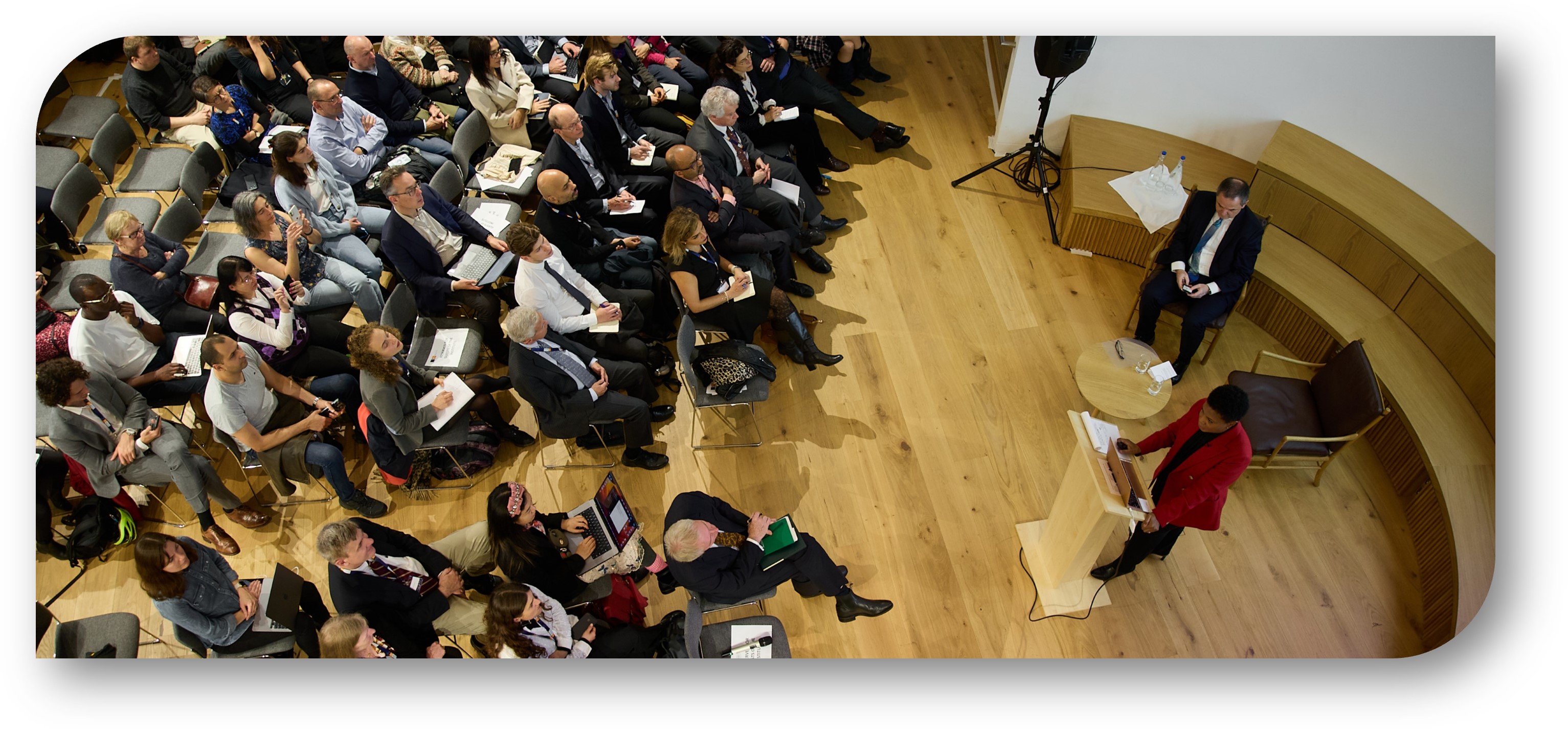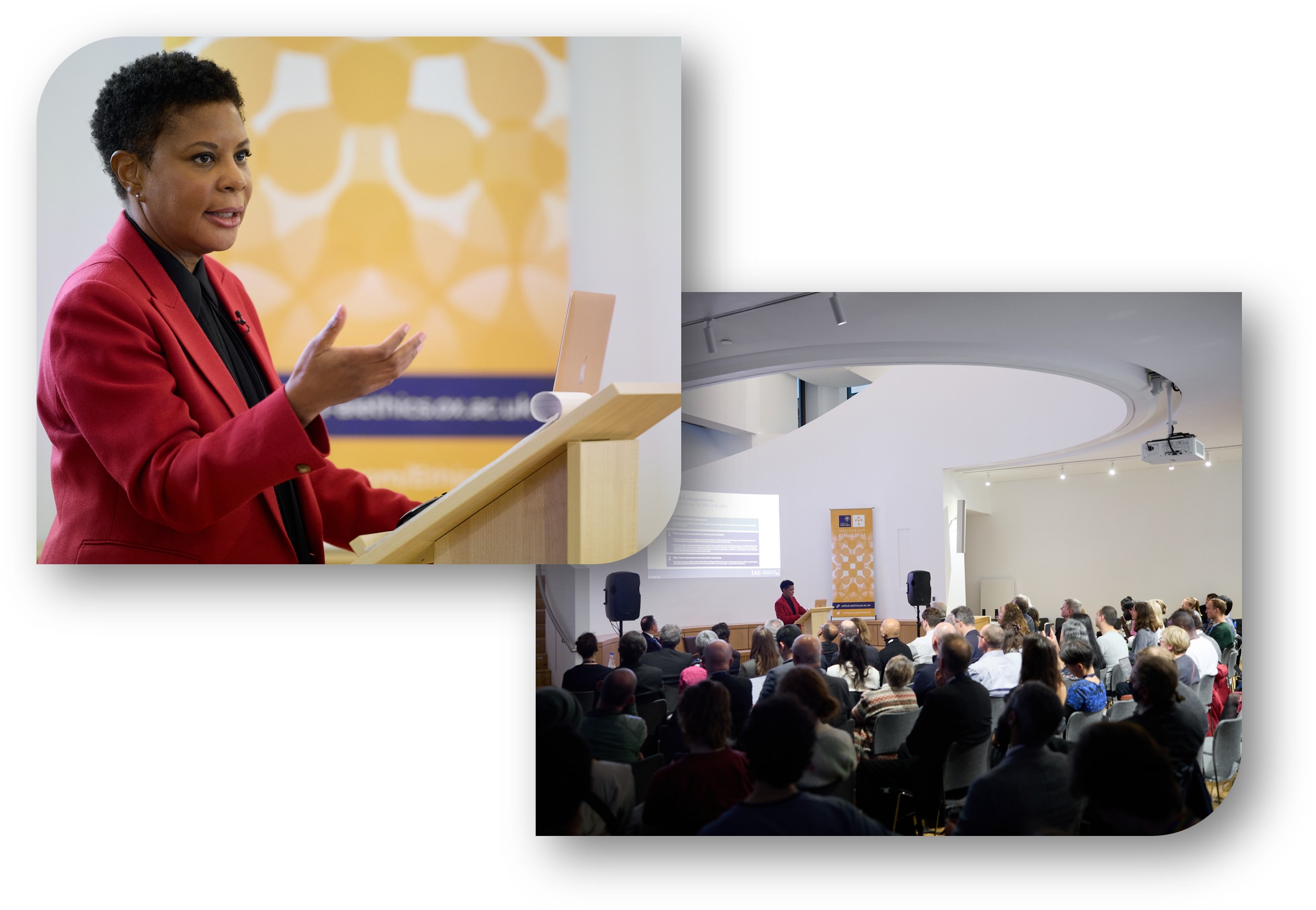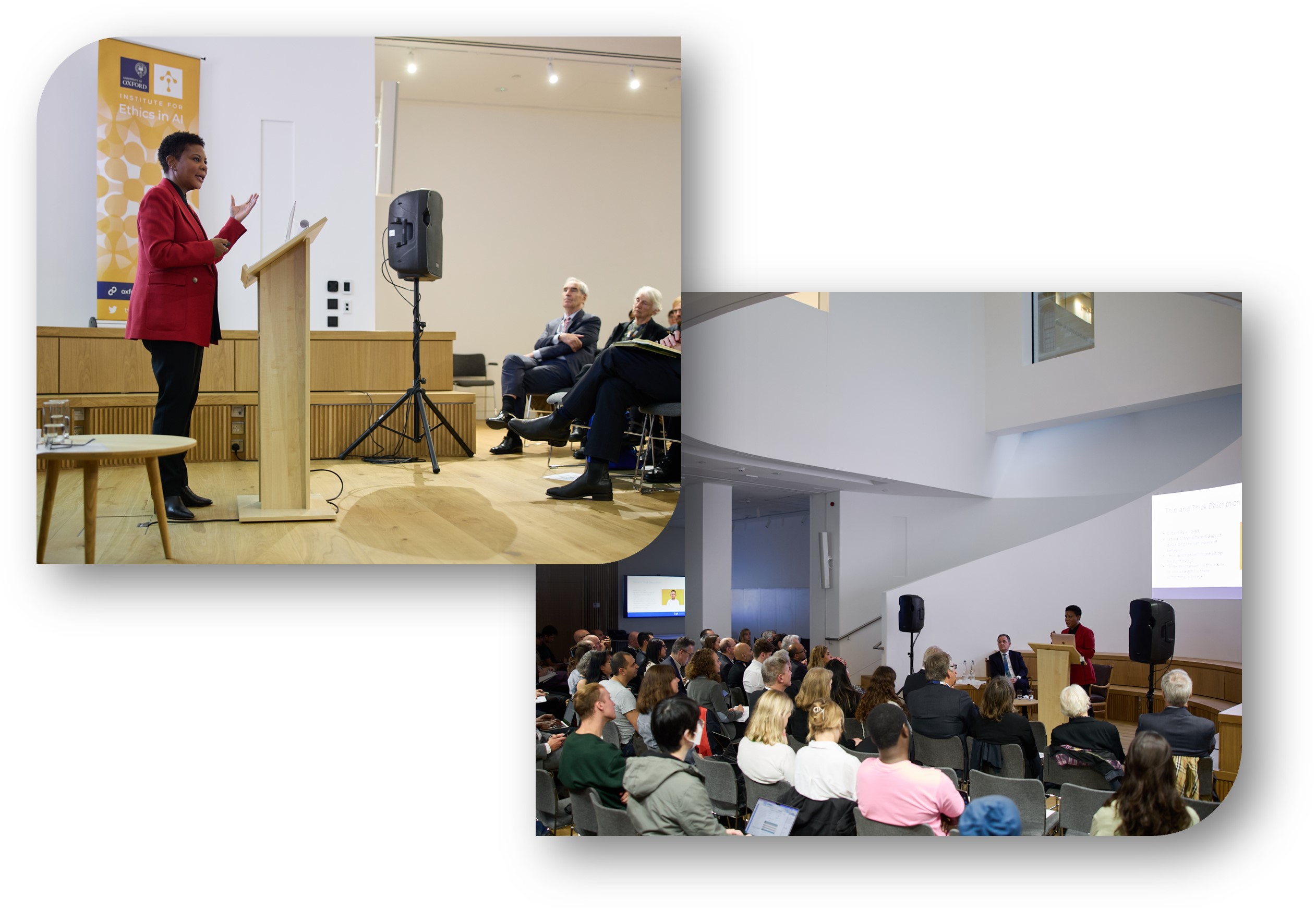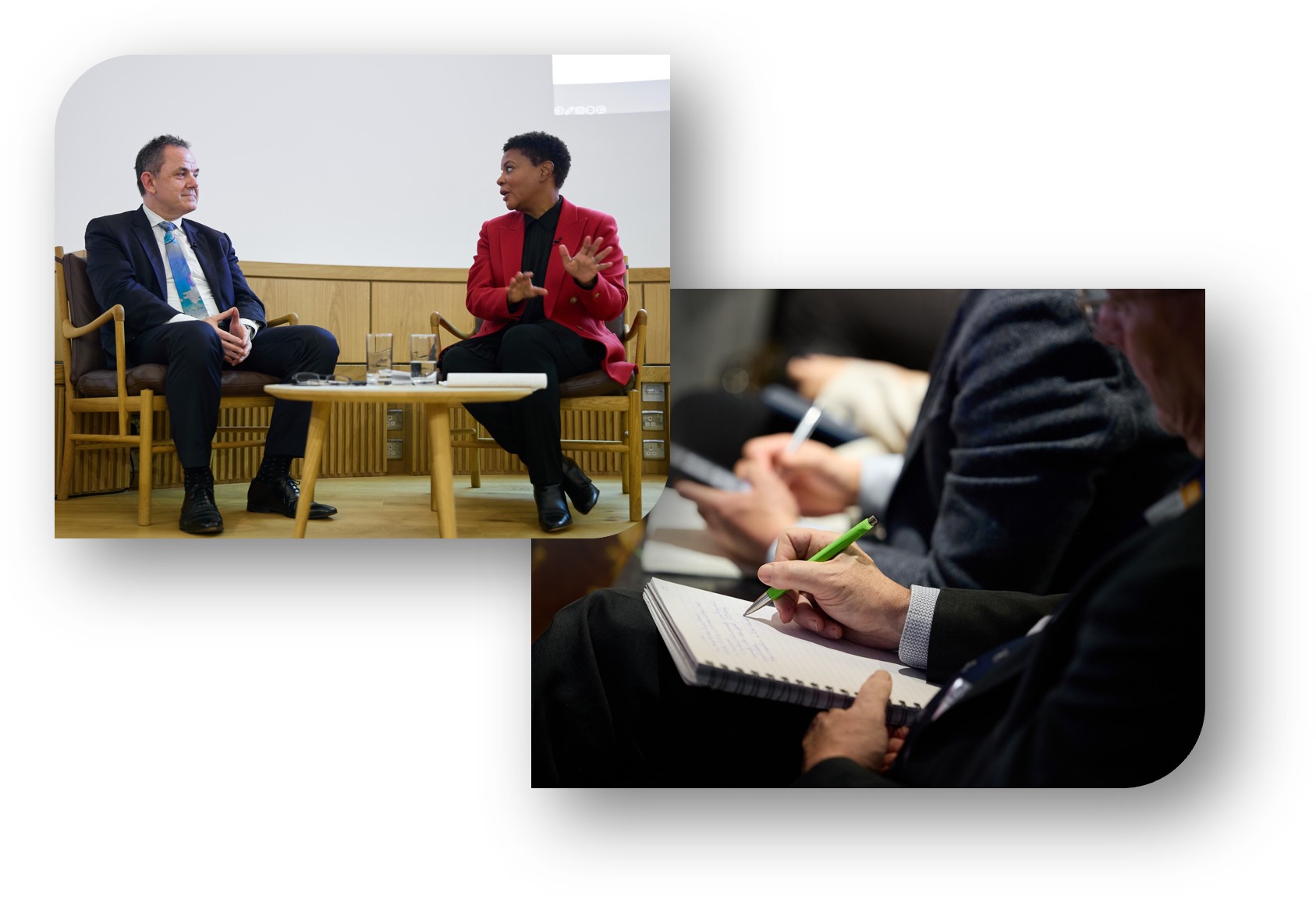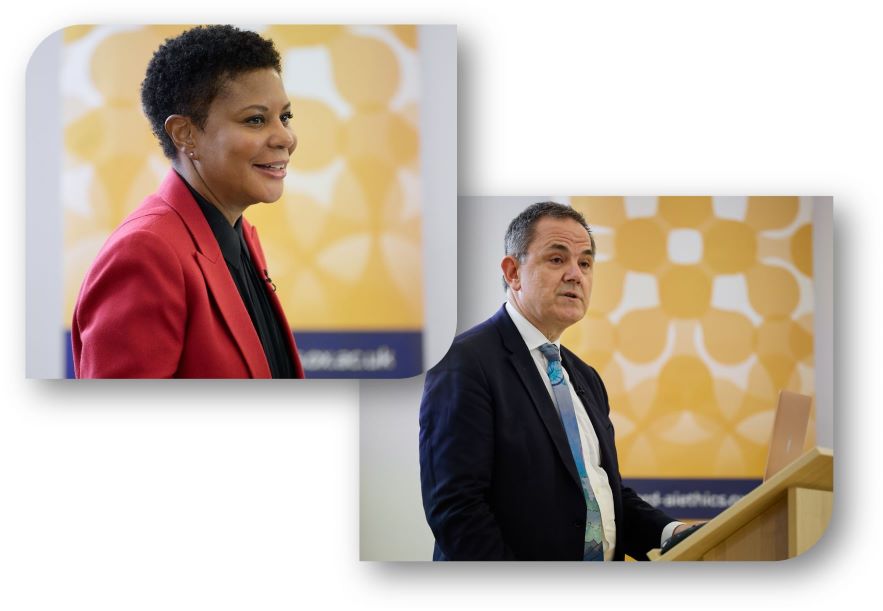
Nelson began her lecture inspiringly by noting the different kinds of hope that AI technologies offer for the world, a tone not often struck by those thinking critically about AI. She suggested three categories of ‘AI for Good’: AI for Science, AI for Accessibility and AI for Efficiency. AI technologies can be used to model highly accurate protein folding to understand diseases like Alzheimer’s (AI for Science), to help blind people navigate around a city (AI for Accessibility) and produce more abundant and healthy crops (AI for Efficiency). Nelson points out that ethicists and policymakers think about risks and challenges not just because those must be mitigated but because “we recognize how important it is to succeed with these things”.
Nevertheless, the current harms and potential risks posed by these technologies form the context for a society-wide effort to think about how we can align AI systems in ways that are compatible with human values and interests. Figuring out how to avoid these harms and how to secure our values is what has come to be known as the alignment problem. Nelson advances an important critique of the alignment approach, namely, that as an approach within the growing field of AI Safety it is “much too narrow a response to the challenges that we face with AI”. The key insight of her talk is that our approach to alignment is too thin, and we should instead be reflecting on the idea of thick alignment.

